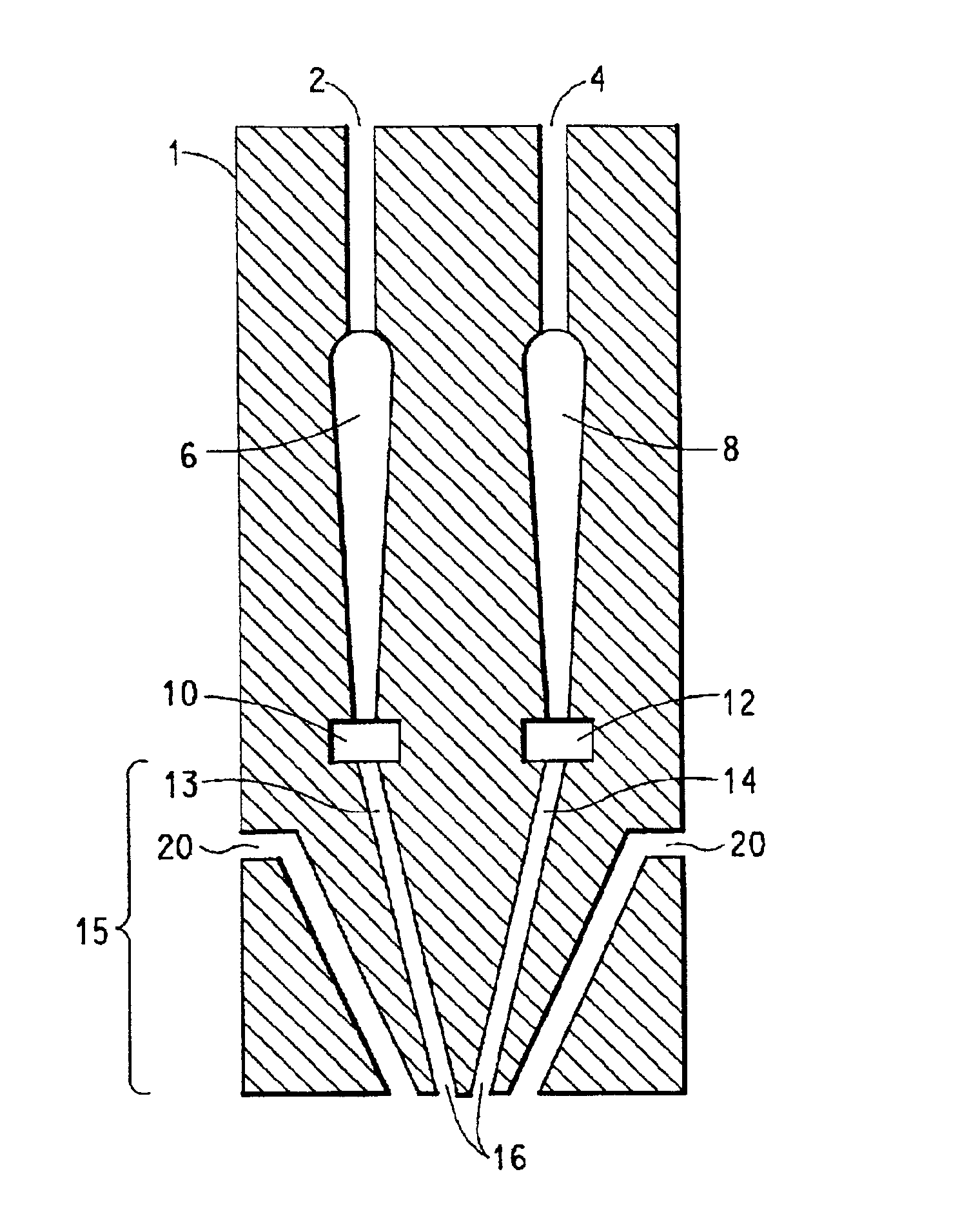Process and apparatus for making multi-layered, multi-component filaments
a multi-component, process and filament technology, applied in the direction of filament/thread forming, melt spinning methods, other domestic articles, etc., can solve the problems of significant number of spinneret orifices, non-uniform filament production of hole dies, and reducing the capacity for downstream filtering, so as to reduce or eliminate unwanted particulate passing
- Summary
- Abstract
- Description
- Claims
- Application Information
AI Technical Summary
Benefits of technology
Problems solved by technology
Method used
Image
Examples
example 1
A meltblown bicomponent web was made with a polyethylene component and a poly(ethylene terephthalate) component. The polyethylene component was made from linear low density polyethylene with a melt index of 135 g / 10 minutes (measured according to ASTM D-1238) available from Equistar as GA594. The polyester component was made from poly(ethylene terephthalate) with a reported intrinsic viscosity of 0.53 available from DuPont as Crystar.RTM. polyester (Merge 4449). The polyethylene polymer was heated to 260.degree. C. and the polyester polymer was heated to 305.degree. C. in separate extruders. The two polymers were separately extruded and metered to two independent coat hanger type polymer distributors. The planar melt streams exiting each distributor were filtered independently and extruded through a bicomponent meltblowing die that has 2 linear sets of independent holes arranged such that a spin orifice for each polymer is located in close proximity which results in a linear array o...
PUM
| Property | Measurement | Unit |
|---|---|---|
| pressure | aaaaa | aaaaa |
| temperature | aaaaa | aaaaa |
| length | aaaaa | aaaaa |
Abstract
Description
Claims
Application Information
 Login to View More
Login to View More - R&D
- Intellectual Property
- Life Sciences
- Materials
- Tech Scout
- Unparalleled Data Quality
- Higher Quality Content
- 60% Fewer Hallucinations
Browse by: Latest US Patents, China's latest patents, Technical Efficacy Thesaurus, Application Domain, Technology Topic, Popular Technical Reports.
© 2025 PatSnap. All rights reserved.Legal|Privacy policy|Modern Slavery Act Transparency Statement|Sitemap|About US| Contact US: help@patsnap.com


